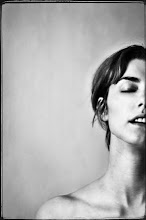



I am making a small children's book with images of birds. The inspiration for this book comes from the old school Dick and Jane books, with extremely simple text and sentence structure. I printed the images with a historic photographic process called cyanotype. This time I didn't print on watercolor paper though, but on cloth. I really liked using cloth as a substrate. I like the softness of the pages and the texture added to the print. I found it a more appropriate and durable substrate for a children book. I still need to figure out a way to keep the edges from fraying though. Any suggestions of the easiest, cleanliest way to fix my edges? Once I do that, it will be ready for me to stitch up into a book form and it will be done. I enjoyed this project so much I plan on making a few of them to sell.
It was really great using the cloth pages for a book too because it is easier than using watercolor paper. This is because the cloth is already pretreated with the chemistry and I don't have to mix and coat the chemistry on myself. There are two great websites where you can buy these pretreated cyanotype cloth pieces:
http://www.blueprintsonfabric.com
http://www.bluesunprints.com/
The later website even has different colors of cyanotype. If you want a fun, simple art project to do I recommend buying a packages of small squares, a large sheet, a t-shirt, whatever you'd like from this website (if you are into quilting and sewing, this is a fantastic way to get your own distinct pattern to work with. The material is washable). While you are waiting for the cloth to come in the mail, start thinking of some fun shaped objects you would like to use for your art piece. This can be flowers or leaves or maybe something like scissors and paper clips or maybe a paper cuttings you did. Whatever it is, make sure its size is compatible to the size of cloth you ordered. When your cloth gets here, take it out of the package, lay your objects on top of it in direct sunlight. It usually takes maybe 10 to 15 minutes (see instructions that come with purchase). After it has been exposed take it back inside. Give it a water bath for about 5 minutes. Then move it to a second water bath that has a little bit of hydrogen peroxide in it(a capsule or two). It only needs to be in that bath for 15 to 30 seconds. (The hydrogen peroxide in the second bath is optional, but recommended. Using it will give you a deeper, richer blue color in your cyanotypes). Then move it to a final bath and let it rinse for 10 to 20 minutes. Hang or lay to dry. And that is it! You have just created some beautiful art!
I have quite a few upcoming art projects I have been gathering plants for, where I will be making cyanotype photograms. I am very excited to create them! I think plant photograms are very beautiful. For inspiration, enjoyment and a vision of possibilities, yet out this artist (make sure to read the artist statement, it is very well written and gives a wonderful insight to the beauty of creating photograms). Also, check out Anna Atkins work, I highlighted her briefly in the post previous to this one:
James Hajicek and Carol Panora-Smith
I think it is important to support shops like the Blueprints on Fabric store so that they stay open and running. I hope each one of you tries it out. It is a super great activity to do with kids too...at birthday parties, preschool lesson, visit to grandmas, etc. ENJOY!

you could use fray check on the edges would leave a textured edge if you want it that way or a bigger textured edge with a serged edge showing or you can make a normal seam and have a super clean finish
ReplyDeleteShe beat me to it! Those three options are what I'd suggest, as well. Fray Check is just a fabric glue. Serging the edge is just a simple stitch that holds the ends from unraveling.
ReplyDeleteIf you're going for a kinda natural finish, I suggest one of those two. If you want a more polished look, a seam would be nice.
Looks like a fun project... That first image with the bird in the bottom right hand corner is great! Very simple, very clea!n, lots of suggested movement, it's great
ReplyDelete